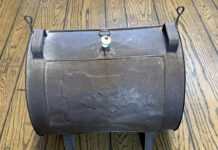By CHRIS PENROSE and CLIF LITTLE
Sorghum-sudangrass hybrids are warm season annual forages that look like sudangrass in growth but are generally taller, with larger stems and leaves.
They are bred for productivity, high yielding and can grow to 15 feet without lodging. Sorghum-sudangrass can be grazed, green chopped, baled for hay, silage, haylage, cover and green manure.
In addition, biomass is becoming an option for power generation and cellulosic ethanol production, and sorghum-sudangrass may be an option as a renewable fuel.
In 2012, Chris Little and I evaluated four new varieties of sorghum-sudangrass. The purpose of this study was to evaluate these varieties for quantity, quality and energy value.
Trials
The four varieties used in the trial were from Chomatin Inc., of Lubbock, Texas. The trial was at the Ohio Agricultural Research and Development Center, Eastern Ohio Research Station, in Noble County, Ohio.
The soil is a Vandalia-Guernsey silt clay (USDA web soil survey). The varieties were replicated four times using complete randomized block design. Each plot was 8-by-24 feet.
The site was a predominately fescue pasture, burned down with Glyphosate (Roundup) at a one-quart-per-acre rate May 12, 2012.
The plots were planted May 31, 2012 at a 23-pounds-per-acre rate (Ohio Agronomy Guide, 14th ed. suggested rate) with a no-till drill. The field was fertilized at rate of 850 pound/acre of 19-19-19 at planting.
The soil was tested prior to planting May 31. The p.H. was 6.9, P, 9 ppm, K 83ppm, Ca 2585 ppm, and mg 364 ppm.
Harvest results
The plots were harvested Oct. 15, 2012 utilizing 2’-by-2’ subsamples from each plot cut at six inches. Each sample was weighed, then ground up with a random subsample and dried at 60 degrees Celsius to determine dry matter and used to convert fresh to dry weight.
Each of the 16 samples were quality tested twice (32 total) for Acid Detergent Fiber, Invitro Total Digestible Dry Matter and Dry Matter BTU’s (British Thermal Unit, the amount of heat required to heat one pound, a pint of water, one degree Fahrenheit).
Analysis of data was performed utilizing SAS PROC MIXED ANOVA Procedure. There were no significant differences (P = 0.05) in ADF, IVTDMD, yield and BTUs among the varieties. ADF ranged from 34.90-48.99 percent; IVTDMD ranged from 56.59-59.74 percent; yields ranged from 17,974 to 58,551 pounds dry matter/acre; and the BTU’s ranged from 7206.1-7534.9 BTU/lb (data provided on a dry matter basis).
There were significant differences in crude protein and Neutral Detergent Fiber, and no significant differences (P=0.05) in yield (table 1).













850 LB OF 19-19-19 PER ACRE???? Please tell me this is a misprint. No farmer on god’s green earth can afford to fertilize ANY CROP at that rate, I don’t care what the soil sample said. Well? What exactly were the 4 varieties? Which one performed best? The analysis showed a heck of a range in yields, and since Chromatin offers 11 different forage varieties of forage sorghum, it would be nice to know which variety performed best under your conditions. Another point, most seed companies recommend seed rates of around 50lb/ac for sorghum-sudan hybrids, not 23 lb/ac. 23 lb/ac IS close to the recommended seeding rate of straight sudangrass (King’s Agriseeds). So where does the Ohio Agronomy guide get this seed rate?
As a farmer who plants sorghum-sudan every summer for grazing and for baleage, I was hoping for a helpful article comparing different hybrids and yields under realistic conditions. Instead, I read a vague analysis of mystery hybrids from only 1 seed company under unrealistic conditions. Thanks for wasting my time.